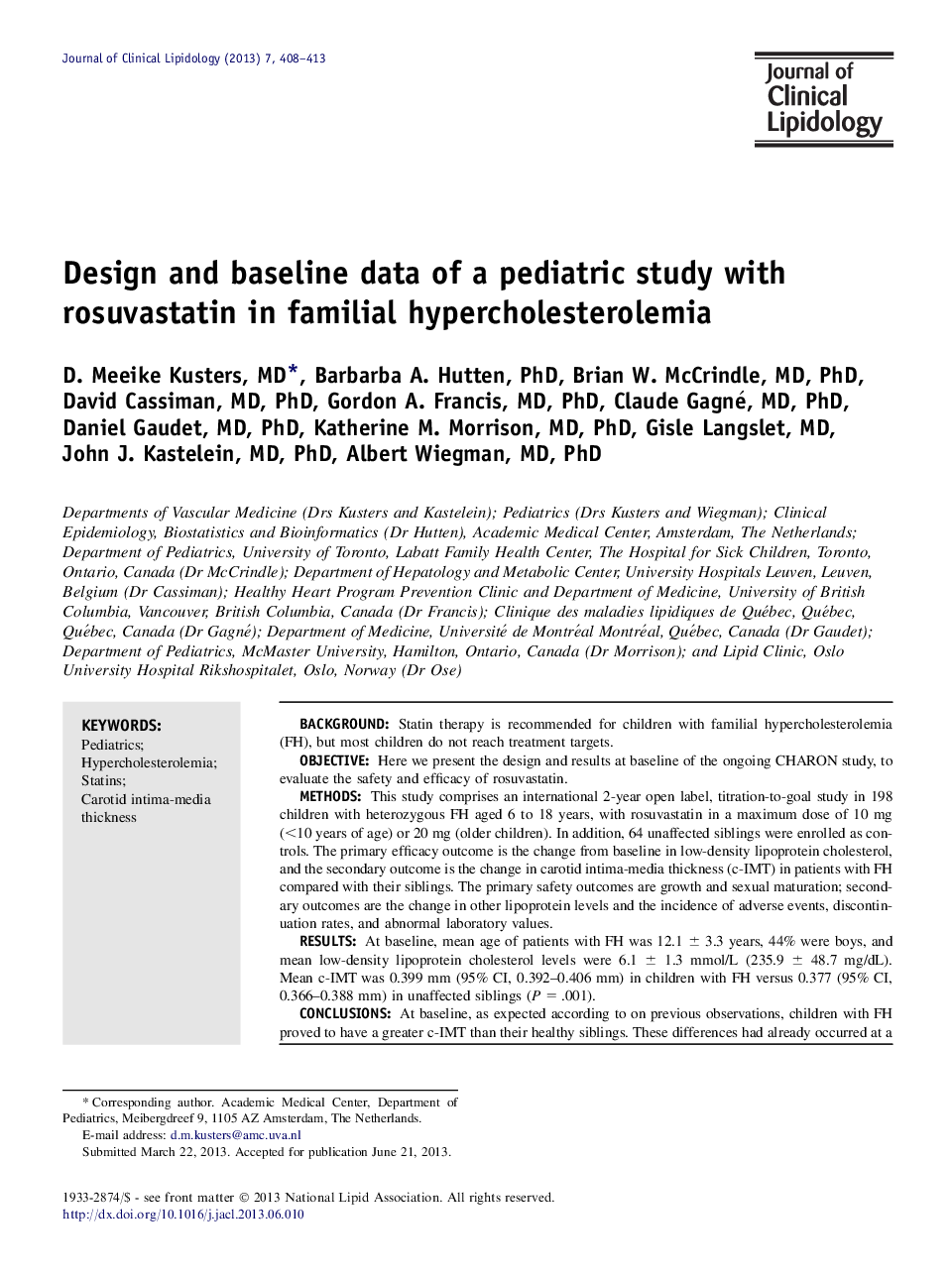| Article ID | Journal | Published Year | Pages | File Type |
|---|---|---|---|---|
| 5986081 | Journal of Clinical Lipidology | 2013 | 6 Pages |
⺠We present the design and results at baseline of an ongoing study.⺠This study evaluates the safety and efficacy of rosuvastatin in children with familial hypercholesterolemia.⺠Healthy siblings were enrolled as controls.⺠At baseline, children with familial hypercholesterolemia had a greater carotid intima-media thickness than their siblings.
BackgroundStatin therapy is recommended for children with familial hypercholesterolemia (FH), but most children do not reach treatment targets.ObjectiveHere we present the design and results at baseline of the ongoing CHARON study, to evaluate the safety and efficacy of rosuvastatin.MethodsThis study comprises an international 2-year open label, titration-to-goal study in 198 children with heterozygous FH aged 6 to 18 years, with rosuvastatin in a maximum dose of 10 mg (<10 years of age) or 20 mg (older children). In addition, 64 unaffected siblings were enrolled as controls. The primary efficacy outcome is the change from baseline in low-density lipoprotein cholesterol, and the secondary outcome is the change in carotid intima-media thickness (c-IMT) in patients with FH compared with their siblings. The primary safety outcomes are growth and sexual maturation; secondary outcomes are the change in other lipoprotein levels and the incidence of adverse events, discontinuation rates, and abnormal laboratory values.ResultsAt baseline, mean age of patients with FH was 12.1 ± 3.3 years, 44% were boys, and mean low-density lipoprotein cholesterol levels were 6.1 ± 1.3 mmol/L (235.9 ± 48.7 mg/dL). Mean c-IMT was 0.399 mm (95% CI, 0.392-0.406 mm) in children with FH versus 0.377 (95% CI, 0.366-0.388 mm) in unaffected siblings (P = .001).ConclusionsAt baseline, as expected according to on previous observations, children with FH proved to have a greater c-IMT than their healthy siblings. These differences had already occurred at a very young age, which emphasizes the importance of considering early statin initiation in this high-risk population.
